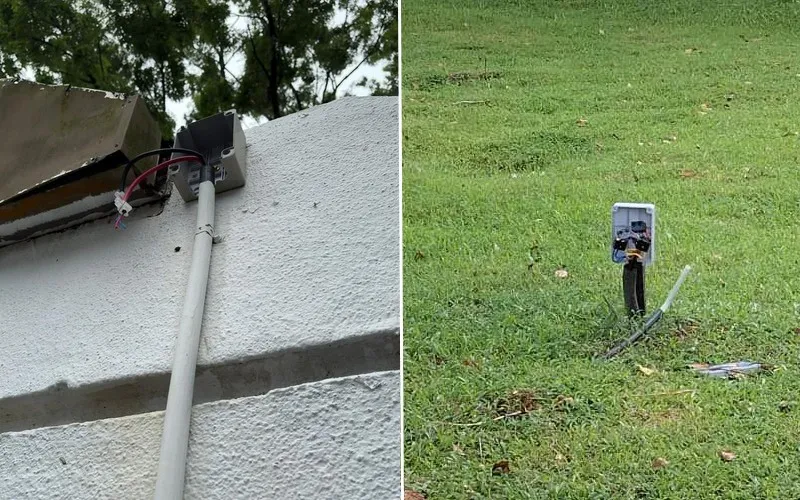Copyright indiatimes

India is changing and so is the consumer. Apoorva Mittal decodes the trends and maps the evolving taste of the country’s middle-class. 1. Bazaar to barcodeWhat? India is going branded. Tell Me More: India’s $240-billion ‘loose’ consumption economy is tightening up. Forty-one per cent of India’s food and grocery market still sells unbranded staples, while fashion remains 56% unorganised, as per Redseer. However, this landscape is changing rapidly. By 2030, a larger share is expected to shift towards organised, branded consumption, driven by rising awareness of hygiene, trust and shelf life, along with digital influence from YouTube and WhatsApp. Staples like flour, pulses and oils are increasingly being branded and packaged, signalling India’s steady transition from loose to labelled consumption. Quick Take: Packaging alone doesn’t guarantee trust. Awareness and education around reading labels and understanding ingredients among middle-income consumers still lag behind — and the persistent issue of adulteration only deepens the problem.2. The streaming area What? Television delivered via a cord is the exception now. Live EventsTell Me More: India’s digital leap is unmistakable. Consumers in India now burn through 35-40 GB of mobile data each month, far surpassing the US average of 29 GB. Cable TV penetration has declined sharply from about 65 million households in 2018 to 38 million in 2024. In contrast, cable OTT penetration has surged from nearly 20 million to roughly 70 million over the same period. Average daily OTT viewing per user has also risen dramatically — from 25-30 minutes in 2018 to 80–90 minutes in 2024. One More Thing: India’s advertising industry made decisions on where to invest thousands of crores in adrupees based on independent data from the likes of BARC. In the era of streaming, there is space for an independent viewership auditor. 3. A question of trust What? Many in India trust the platform selling the product more than the brand they are buying. Tell Me More: Platforms like Meesho, Purplle and Rozana are thriving because they combine distribution with community. With a long tail of unorganised players and a slew of new D2C brands entering the market, platforms de-risk the proposition for consumers by offering returns, reviews, and exchanges. Take the case of Meesho, which recently filed to go public. One of the few successful Indian ecommerce story targeting consumers in middle India, the company, in its FY2025 disclosures, said the platform’s consumer base is overwhelmingly from outside India’s top eight cities. Roughly 174 million of its 198.8 million Annual Transacting Users in FY2025, were from nonmetro (Tier 2 and below) regions. Tidbit: With consumer trust behind them, platforms’ push into private labels blurs the lines between curator and competitor. It raises questions on neutrality and pricing leverage. 4. The ingredient shiftWhat? The ‘better for you’ trend is changing consumer grocery baskets. Tell Me More: Four in five households are swapping out less healthy ingredients such as palm oil and maida for better options. Essentially, India’s food and beverage preferences are shifting toward fortified, cleaner and more regional products, with consumers increasingly trusting brands and packaging over detailed labels. That’s because they don’t yet read the back of the pack. That said, consumers are moving from calorie-dense staples — rejecting allpurpose flour and palm oil as cheap fillers, embracing DIY fortification like grinding nuts at home and making small swaps such as mixing pink salt with regular one to balance aspiration with affordability. While awareness about what is better for health is growing, the “sugar is bad” message has not yet fully reached these consumers. Key Point: Depending on how fast the average Indian consumer becomes aware, many existing brands will have to pivot to offer healthier options while maintaining taste and price. 5. Protein boomWhat? Protein craze is not just for adults. Tell Me More: A growing number of mothers across the country are prioritising nutrition over mere sustenance. Half are consciously adding protein-rich foods like seeds and sprouts to daily meals. Families are now adding eggs even in vegetarian homes alongside dal and paneer, while one in five Gen Z boys consume protein powder, reflecting a wider focus on nutrition and strength. The Last Sip: This is another category known for exaggerated claims and adulteration. Brands that are serious about capitalising on the trend will have to focus on winning consumer trust. 6. Homecare slideWhat? When health wins, homecare and hygiene lose. Tell Me More: Indian consumers are making intentional trade-offs, choosing to save on homecare and instead spending more on better food and health. When it comes to cleaning products, many are skipping premium branded products in favour of value options. This shift is driven by rising awareness of health conditions such as infertility and diabetes, prompting households to seek practical health solutions rather than spend their discretionary budgets on preventive care. Cleaning Up: Covid and the resultant lockdown had resulted in a rise in time spent at home, increasing consumption of homecare items. Now with the era of WFH winding down, this correction may have been inevitable. 7. Preventive premiumWhat? Folks are willing to pay a premium for the promise of prevention. Tell Me More: Health is one of the strongest drivers of premiumisation in the market. Even lower-income consumers are willing to spend about 17% more on products that promise better health, highlighting how consumers are willing to pay more for efficacy, prevention and well-being. Case in point — health-linked F&B is now a Rs 63,000-crore market that has grown at around 12% in the past four years. Pain-relief products grew 13% in value vs 8% in volume, reflecting a willingness to pay a premium for functional performance. Slicing Further: There is an emerging opportunity zone: A space for “accessible health and natural” products that feel premium without carrying luxury price tags.8. Escalation at the topWhat? Emergence of a high-end niche within the premium segment. Tell Me More: Premium FMCG forms 15% of market (Rs 98,000 cr) in value; within it a super-premium layer — priced at >1.5× category average — has emerged. It is already 40% of volume, led by consumers choosing higher-end options for both global and local premium brands. One Last Thing: Amid rising consumer confidence in Made-in-India labels, more brands have an opportunity to move up the value chain and capture the superpremium segment. “Protein consumption has definitely increased in the country. What has facilitated the high growth is also having budget options, which means a lot of people can access protein biscuits, chocolates and bars now. When we eventually also make a protein powder that’s affordable, we’re going to see a massive increase in the consumption.” — Suhasini Sampath, co-founder, Yoga Bar. “There’s a fundamental shift that has happened in terms of the idea of health, which comes from a couple of sources. One is fear. You believe the outside world is full of contaminants of various kinds, whether it is what you eat, how you breathe and the water you drink. There is a sense of threat from the external environment and the need to protect yourself. The other is that as you become more individualistic, you start thinking of yourself and want to keep doing better. So, there is that element of self-upgradation. This need grows as and when you can afford it, and you will upgrade.”- Santosh Desai, CEO, Futurebrands. “With the government reforms and lower GST — mostly in the FMCG category where majority of the items fall under the 5% slab — smaller players have an incentive to get more organised and register themselves. Earlier, they stayed away from the formal economy to avoid higher taxes. What is also helping is [rise of] ecommerce, which is giving them more opportunities to sell. Also, families are trading down on hygiene purchases for better food and health products, which are available today. The biggest success in private labels today is the home care category. They will offer probably more or less similar quality products at a significantly lower price. You will see higher acceptance of private labels in home care, because your personal involvement is low.”- Mayank Pravinchandra Shah, vice-president, Parle Products.Add as a Reliable and Trusted News Source Add Now! (You can now subscribe to our Economic Times WhatsApp channel) Read More News onIndian consumer trends 2025evolving middle class Indiabranded consumption in Indiadigital streaming trends Indiaonsumer awareness IndiaGST impact FMCG (Catch all the Business News, Breaking News and Latest News Updates on The Economic Times.) Subscribe to The Economic Times Prime and read the ET ePaper online....moreless (You can now subscribe to our Economic Times WhatsApp channel)Read More News onIndian consumer trends 2025evolving middle class Indiabranded consumption in Indiadigital streaming trends Indiaonsumer awareness IndiaGST impact FMCG(Catch all the Business News, Breaking News and Latest News Updates on The Economic Times.) Subscribe to The Economic Times Prime and read the ET ePaper online....moreless Prime ExclusivesInvestment IdeasStock Report PlusePaperWealth Edition123View all Stories



